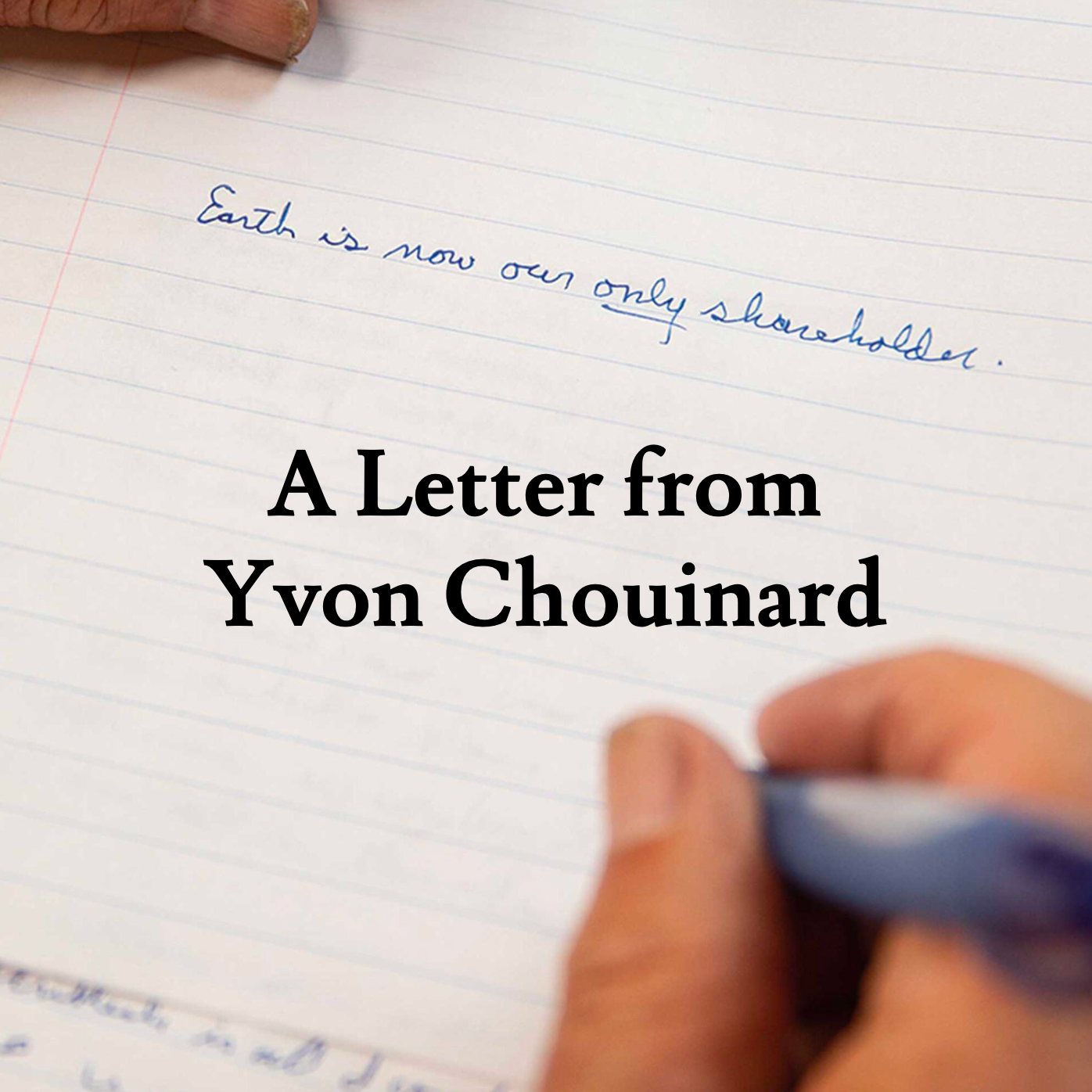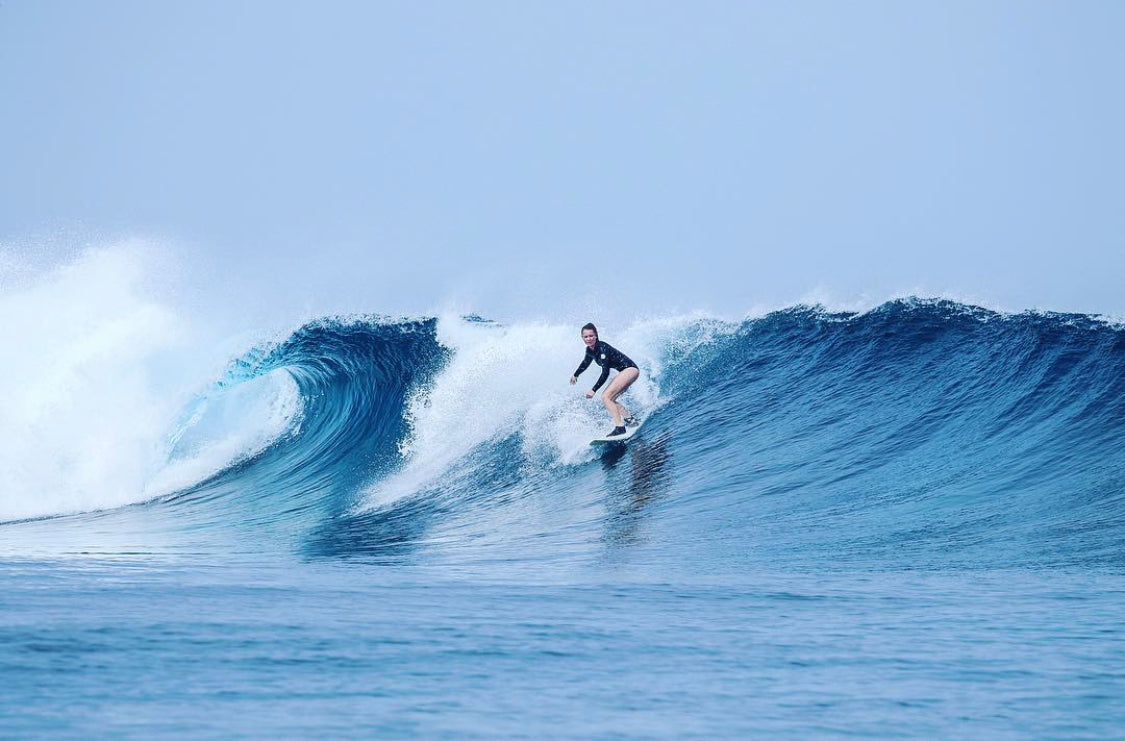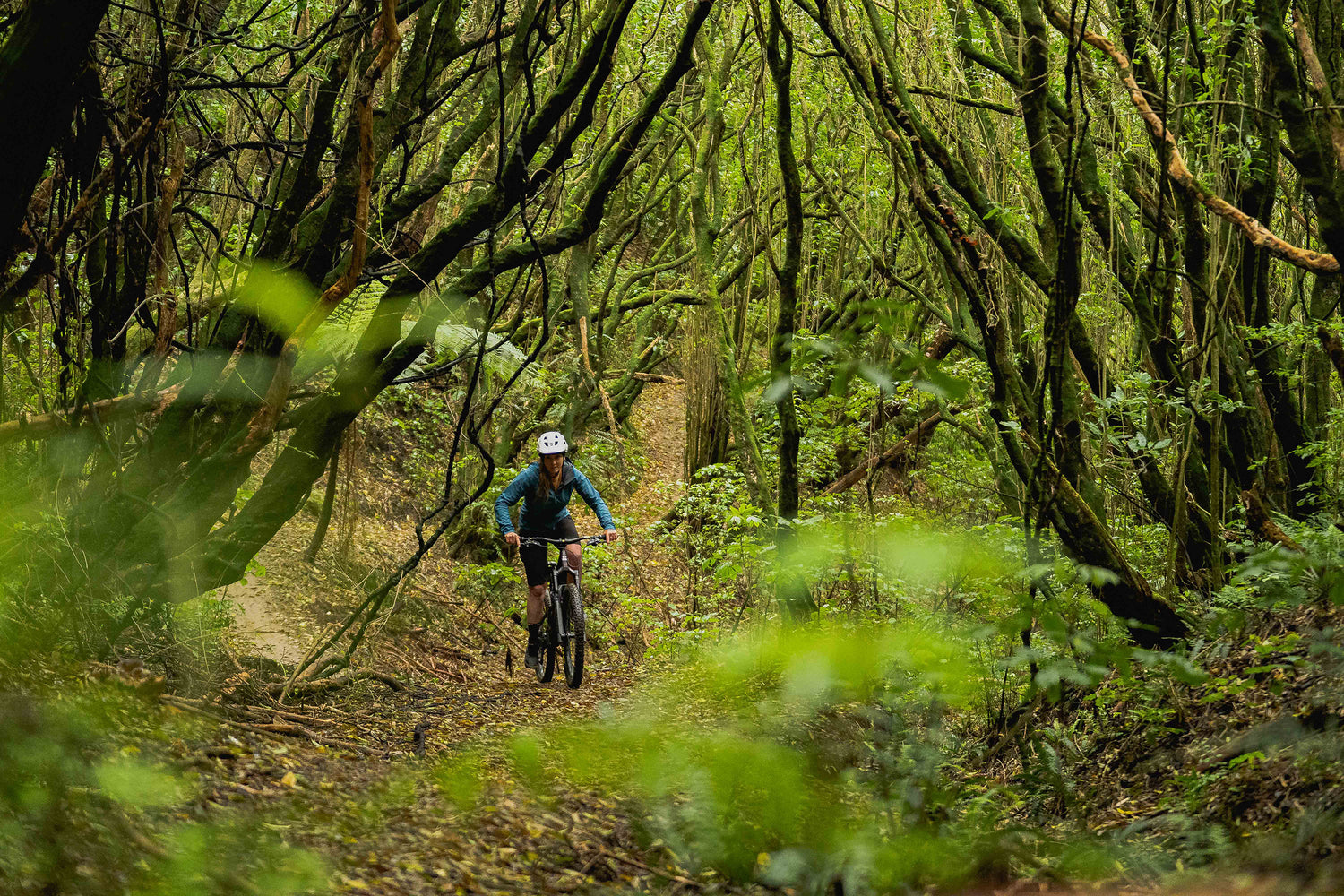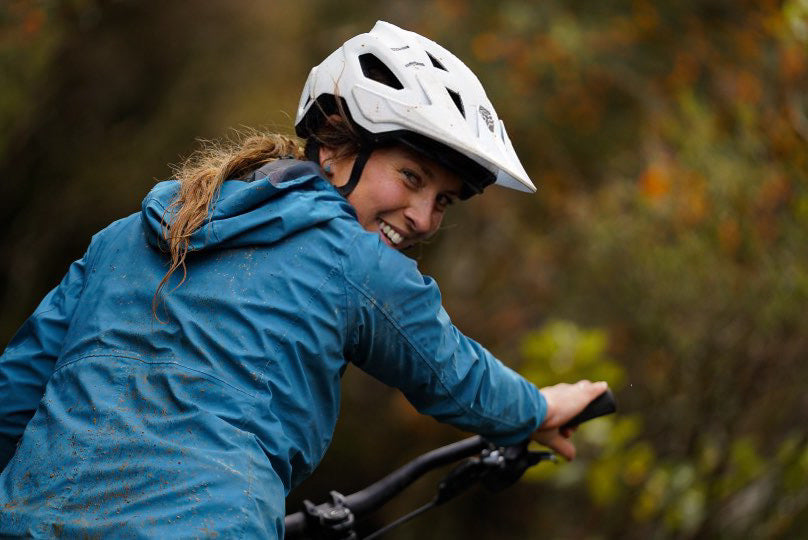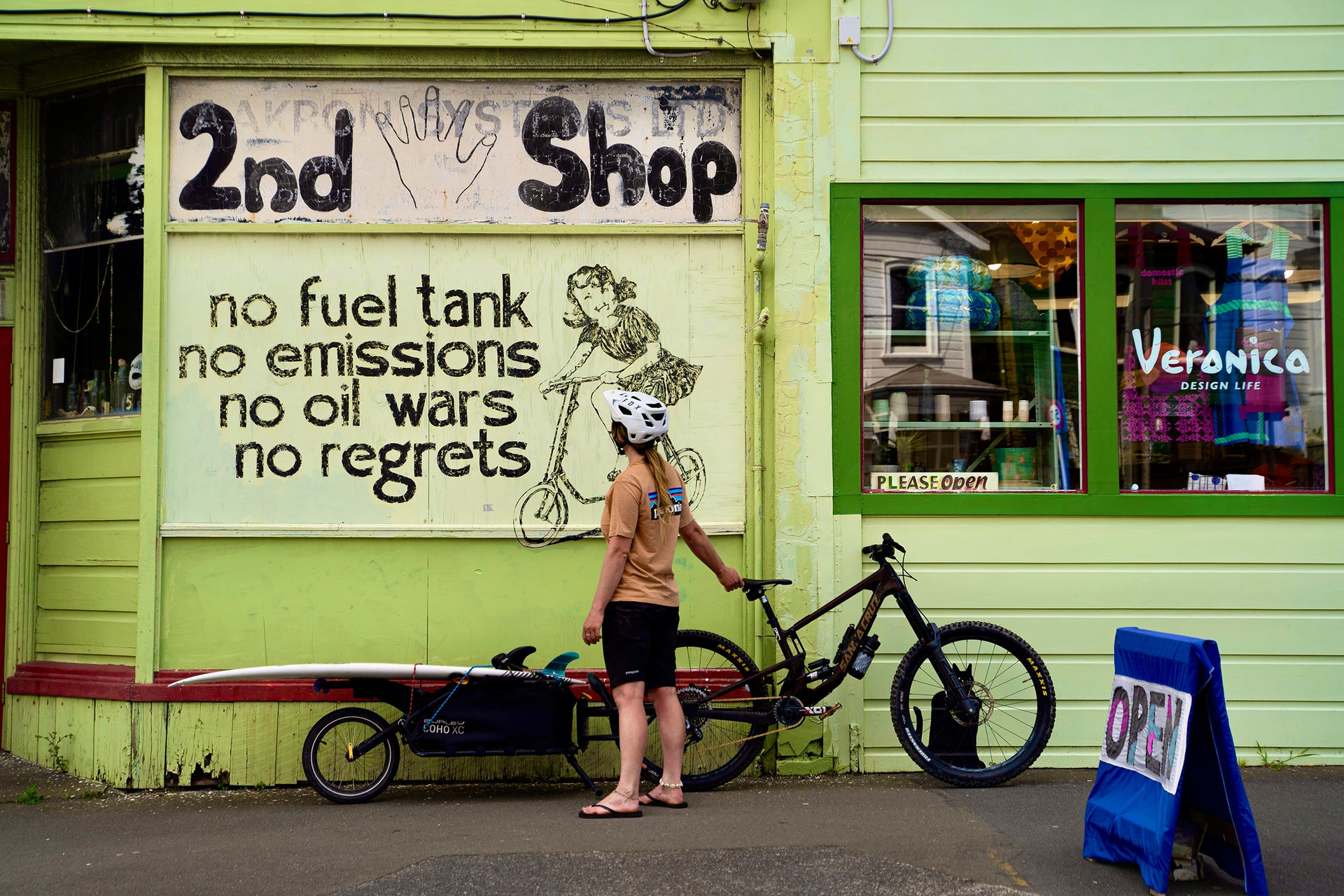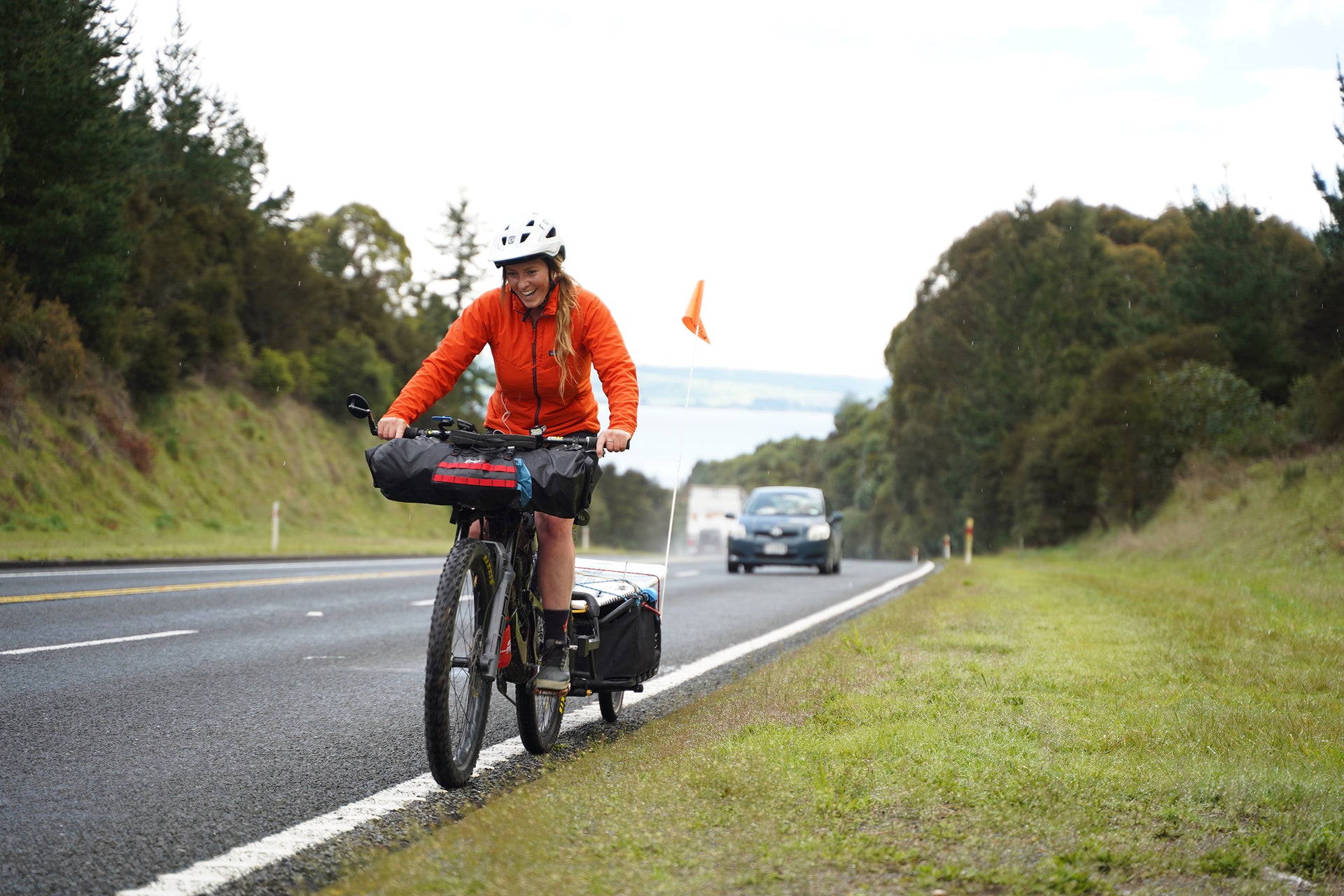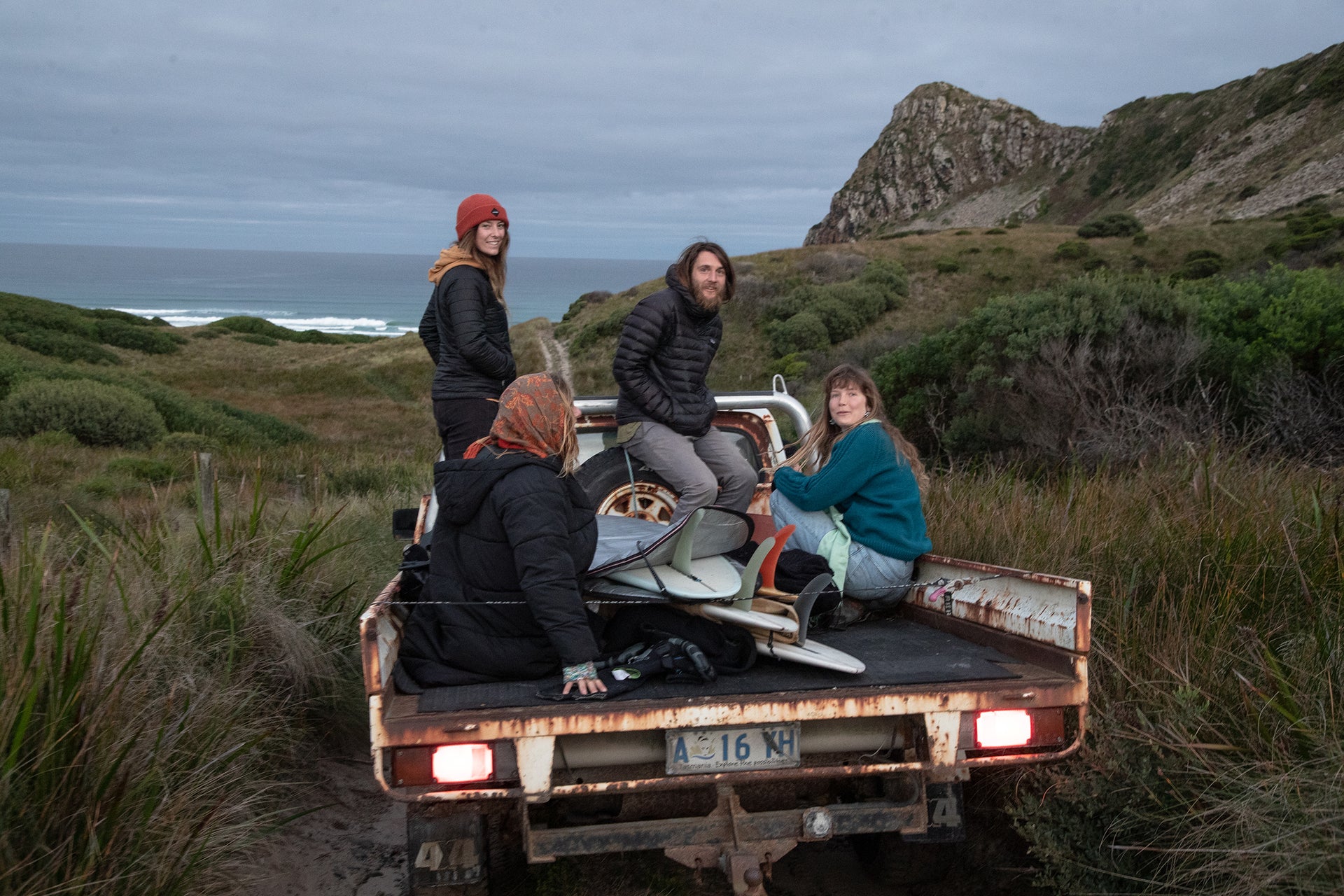Annie’s big ride ended up taking three months. On the map, her routeline loops and wanders, circumnavigating the slopes of great volcanoes, backtracking to far-flung promontories, and veering off sideways (often) like some wonderful and demented piece of abstract calligraphy. She clocked up 3,622 kilometres on the trail — from the very northern to the very southern tip of Aotearoa. Unsurprisingly, her fitness levels skyrocketed.
“I’ve never been this fit in my life. You can ride all day as long as you’ve got food. You can just keep going — you don't get tired, and you don't get sore. You're constantly breaking down these limiting beliefs. I kept thinking, I wonder what I can really do. So, one day, I set out to find my limit. I just kept riding and riding. I did over a third of the South Island on that day, just nailed out about 300 kays. These crazy ideas come out to you out there because you’re pumped on endorphins all day long. And the result is that you really start to back yourself.”
It wasn’t all sweet lefts, meandering backroads, expansive horizons and fun times. Annie came close to ending her ride in the worst possible way, being sideswiped by a car on a narrow bridge at peak hour. She copped horizontal sleet, gale force winds and all kinds of calamitous conditions. But the strangest challenge came right near the end of the route.
A curious thing happened — she just didn’t want to stop. "If that road kept going to Antarctica, I would have kept riding. You're learning, you're growing, you're experiencing Country, you're healthy. Your perspective is so enormous while you're out there. I didn’t want to go back to routine.”
In Invercargill, less than 100 kilometres away from the finish line, Annie halted, filled with dread at the thought of arriving at the southernmost tip, the place where the land stops. She spent two weeks studiously avoiding it, backtracking to surf some remote southwest sliders and eventually resorting to riding 50-kilometre long lappies around the edges of Invercargill.
“It was pretty silly, but also excellent, because the dread of finishing ended up catalysing a new plan in my mind. The hardest thing you can do on a mountain bike is what they call an ‘Everest’, which is where you find a mountain and you lap it, you climb up it and go down it, over and over and over again, until you accumulate the equivalent height of Mount Everest, from sea level to the summit. I did a bit of googling and I saw that some people did 10,000 metres, more than Everest which is 8,848. They go a bit higher. That was it. I decided that I was going to do that.”
She jumped on her bike and rode the final leg to Slope Point, Southland, the southernmost tip, then circled back up to Queenstown. A few weeks later, Annie became the first woman on earth to do the ‘Everest’ on steroids (the 10,000) on a mountain bike. She watched the sun rise twice from the slopes of Coronet Peak, riding the access route up and descending on a speedy single track, again and again and again. She made history, but she didn’t do it alone.
“The good thing about Queenstown is it's full of go-getters. If someone hears about anyone doing something epic, they'll come and help out. So, I did the first lap alone, but on every other lap, strangers, friends, anyone and everyone turned up with food, with help, with music, with assistance. For 31 hours, I was completely supported.
“At the start of the tenth lap, I remember looking over to a friend and I said laughing, ‘This ‘Everest’ thing is pretty easy. At that moment, the heavens opened up and it started sideways raining, which was fine until the descent. It was like an icy river. We got absolutely soaked. I couldn't think. At the time I was refusing to breathe life into what I was feeling. But in hindsight, I was hypothermic.
“The troops mobilised — this is like 2 or 3am. They went and cleared out closets around Queenstown and brought back warm, dry, clean gear for everyone, because we were all in the hurt. Even then, I couldn't have kept going without support. I couldn’t think anymore. I needed instructions to see it out. One of my friends was like, ‘How hard you want me to push you?’ And I was like, ‘All the way. If you do anything less, I'll never forgive you.’”
At 8am on the second day, after 13-and-a-half vertical laps of Coronet Peak, Annie reached 10,000 metres. She pressed stop on the clock, hugged her crew, sat down in the car and immediately fell fast asleep.

